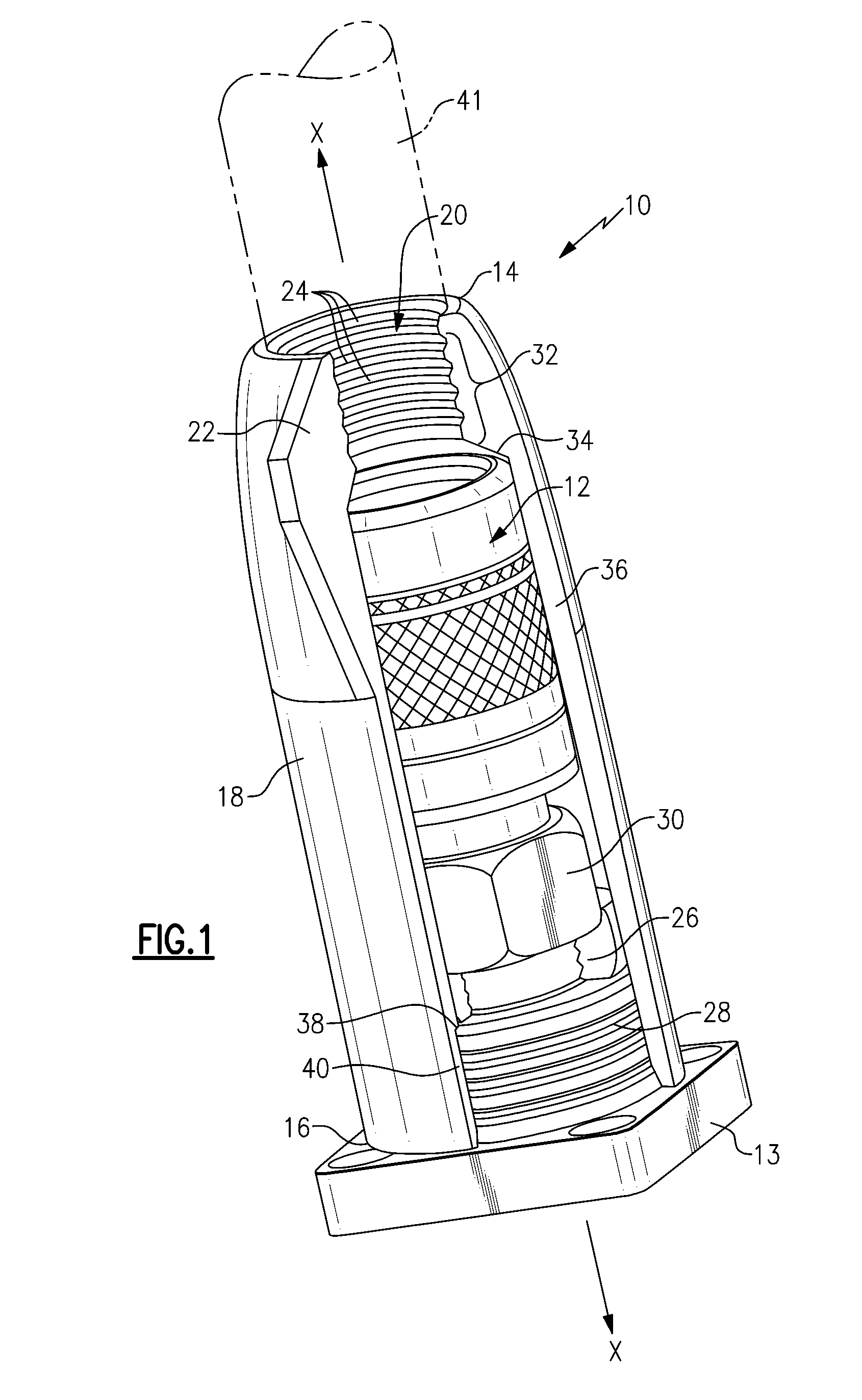Cover for cable connectors
a cable connector and cover technology, applied in the direction of connection insulation, insulating body, coupling device connection, etc., can solve the problems of affecting the service life of components,
- Summary
- Abstract
- Description
- Claims
- Application Information
AI Technical Summary
Benefits of technology
Problems solved by technology
Method used
Image
Examples
Embodiment Construction
[0028]Referring now to the drawing figures in which like reference numerals refer to like parts throughout, there is seen in FIG. 1 a cover, designated generally by reference numeral 10, adapted to be placed in secure and sealing relation over a connector 12, such as (a 5-series connector manufactured by John Mezzalingua Associates, Inc. of East Syracuse, N.Y. that is adapted to terminate a ⅞″ cable). Connector 12 terminates on a bulkhead 13. In the embodiment of FIG. 1, cover 10 comprises an elongated body composed of a rubber material that exhibits a low modulus of elasticity over an extended temperature range, preferably a silicone rubber, that extends along a longitudinal axis X-X, a cable end 14, bulkhead end 16, exterior surface 18, interior surface 20, and wedge shaped wings 22 extending from opposing sides of exterior surface 18 that provide a gripping surface for a tool or manual engagement, such as pliers or a user's fingers, used to remove cover from covering relation to ...
PUM
| Property | Measurement | Unit |
|---|---|---|
| cross-sectional diameter | aaaaa | aaaaa |
| corrosive | aaaaa | aaaaa |
| electrical | aaaaa | aaaaa |
Abstract
Description
Claims
Application Information
 Login to View More
Login to View More - R&D
- Intellectual Property
- Life Sciences
- Materials
- Tech Scout
- Unparalleled Data Quality
- Higher Quality Content
- 60% Fewer Hallucinations
Browse by: Latest US Patents, China's latest patents, Technical Efficacy Thesaurus, Application Domain, Technology Topic, Popular Technical Reports.
© 2025 PatSnap. All rights reserved.Legal|Privacy policy|Modern Slavery Act Transparency Statement|Sitemap|About US| Contact US: help@patsnap.com



